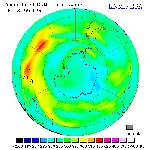 06 Aug 1999 |
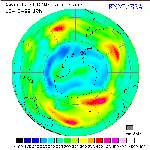 16 Aug 1999 |
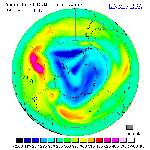 26 Aug 1999 |
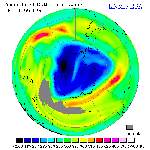 06 Sep 1999 |
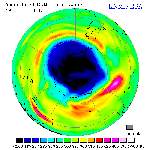 16 Sep 1999 |
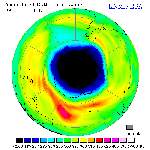 26 Sep 1999 |
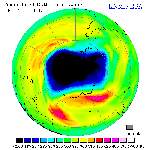 06 Oct 1999 |
 16 Oct 1999 |
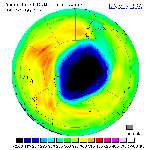 26 Oct 1999 |
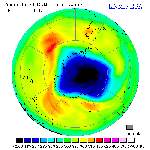 06 Nov 1999 |
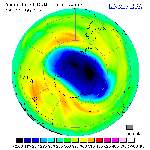 16 Nov 1999 |
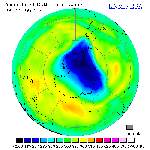 26 Nov 1999 |
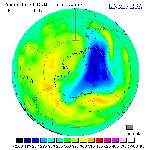 06 Dec 1999 |
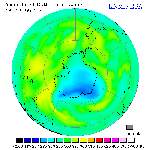 16 Dec 1999 |
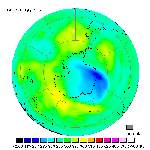 26 Dec 1999 |
 
Ozone concentrations are given in Dobson Units (DU), where 100 DU is equal to a layer of 1 mm ozone at sea-level pressure and 0° C. There are about 3 molecules of ozone for every 10 milion air molecules. The ozone concentration in the Earths atmosphere is on average about 300 DU. The region above Antartica where the total ozone concentration is less than 200 DU is named the ozone hole. In each of the above pictures, the thin circle around the Antarctican continent is 60° S and the outer thin circle is 30° S. Meridians are drawn at 30° interval, with the 0 meridian to the centre-right. | ||
 Jos van Geffen
Jos van Geffen